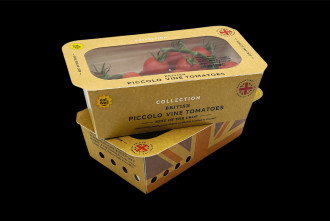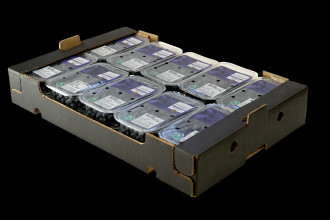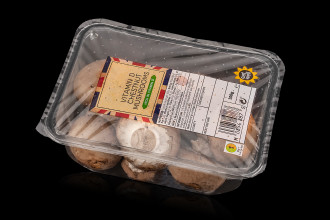01/03/2023
-
- Markets
- Machine Range
- Capabilities
- Innovations
01/03/2023



Special comment for Food & Drink Business – Fresh & Chilled Foods, New Products and the Technology of Keeping it Fresh.
By Gary Lee, Sales Manager, Proseal Australia
The top-sealed food tray is a perfect example of how to protect food, keep it fresh and reduce unnecessary waste. The development and growth of the format has met the need for convenience for today’s busy consumers, packing a huge variety of products from fruit and vegetables to fresh meat to ready meals.
At the same time, it provides suitable protection on the journey from factory to retailer to home – for example, grapes sold in sealed trays rather than loose bunches can typically reduce waste in stores by over 20%.
A tray, sealed with a top film, has the ability to inhibit and control the ingress or egress of gases and moisture, reducing deterioration to extend shelf-life. Modified Atmosphere Packaging (MAP) enables the manipulation of the atmosphere inside a tray containing meats, fish and other perishable foods.
For example, oxygen produces lipid oxidation reactions and also causes high respiration rates in fruit and vegetables. These can cause shortened shelf life. The presence of oxygen also encourages the growth of aerobic spoilage and the potential formation of other unwanted microorganisms.
Reducing the amount of oxygen and replacing it with other gases therefore reduces or delays these unwanted reactions. To change the atmosphere within a pack, the oxygen must be reduced or removed.
The MAP process lowers the volume of oxygen contained within the empty space of the pack and can also prevent the formation of water vapor. The oxygen is often replaced with other gases. Stabilising the controlled atmosphere of these gases can be achieved by processes such vacuuming and gas flushing.
More recently new sealing technologies have been introduced alongside MAP. For red meat, skin packaging, which features a special film that seals to all surfaces of a tray – rim, sidewalls and base – to tightly cover the entire contents, has proved a major benefit. As well as providing enhanced on-shelf presentation through maintaining the bloom of the meat, it can also double its shelf-life.
Sealed trays are also perfect for the further processing of products using different sterilisation methods such as retort or HPP (High Pressure Processing) to further increase shelf-life.
Selection of the most appropriate tray sealing machine is critical to achieving this protection and extended shelf-life. As well as ensuring that the machine delivers a consistently reliable seal each time, it may also be appropriate to choose a model with the flexibility to handle all the different types of seal formats now available. In particular, this will provide valuable future-proofing that enables food manufacturers and processors to respond to latest trends and market demands without the need to constantly invest in new equipment.
For example, our E-seal® sealing system can handle any type of tray, including atmospheric, MAP, Vacuum MAP, Skin, Skin Plus and Skin Deep. Customers can simply select the format types they require, and these can be added to or taken off at any time. The system can be adapted to meet the exact sealing requirements of individual products.
E-seal® technology also delivers a high-precision seal with an extremely strong sealing force, ensuring every seal has the tightness and reliability to maintain its effectiveness both for further processing and throughout the supply chain. In this way, it helps to ensure that manufacturers continue to meet the stringent quality requirements of the retail sector.
At the same time, the sealing process is carried out while reducing compressed air usage by over 90%, thus also delivering important energy and cost savings. Equally important, the tray sealers retain pneumatic functions as well, which means they can offer additional benefits, such as date coding of pre-printed film.